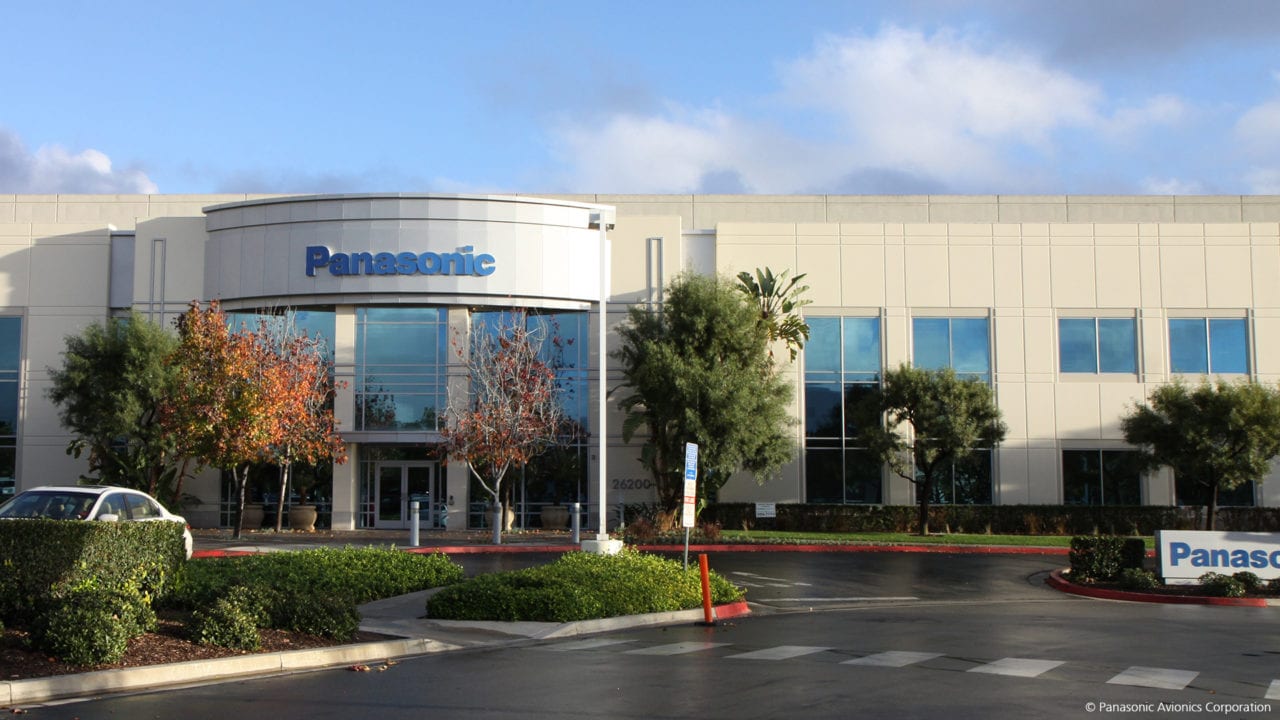
Panasonic Avionics’ California headquarters. Photo courtesy of Panasonic Avionics
FLYHT Aerospace Solutions is acquiring Panasonic Weather Solutions (PWS) from its parent company. In exchange, Panasonic Avionics Corporation will pay FLYHT $3.3 million — you read that right.
“Assets, as they stand, are loss-making,” said FLYHT CFO Alana Forbes on a conference call Thursday. That’s why Panasonic was willing to agree to pay FLYHT to take the weather business and associated contracts off its hands.
Panasonic Avionics CEO Hideo Nakano called FLYHT “the ideal choice to foster long-term sustainable growth for FlightLink, AirMap, TAMDAR and other PWS products and services” in a statement and noted that his company intends to continue a relationship with FLYHT in the future.
However, “FLYHT is a company that doesn’t have a lot of spare money” in the words of FLYHT CEO Tom Schmutz. Therefore the contribution from Panasonic — which can be adjusted down or up to $4.4 million pursuant to FLYHT’s income over the next 18 months — will keep the acquiring company cash-neutral during the acquisition period.
Despite a history of revenue loss, Schmutz expressed optimism about the opportunities the acquisition will provide. FLYHT projects $11.7 million in additional revenue during the transition period, nearly doubling the company’s current revenue, and its backlog will be nearly doubled to about $34 million.
As valuable as the contracts that make up that backlog is who the contracts are with, according to Schmutz. About half the new revenue from the acquisition will come from a deal with Air Asia that PWS signed in 2015 to provide 90 aircraft with products including a flight map. FLYHT will take on that as well as nine other service contracts.
Schmutz wouldn’t name other operators, but said that the list included a subsidiary of another major Asian operator, a subsidiary of a U.S.-based operator and an operator in Europe. Between the contracts that FLYHT will take on and the expectation of continuing to work with Panasonic Avionics, Schmutz said new customer opportunities would be a benefit to his business.
“PAC’s customer list is really the who’s-who of the aviation world,” he said.
Meeting the goals FLYHT has set forth will require that the company cut expenses and make additional sales, but Schmutz was confident in doing that. He said because PWS’s work was so similar to what FLYHT already did, there would be redundant positions, creating a surplus in labor, which is the biggest expense FLYHT faces. It can also benefit from integrating technology from the acquisition such as aircraft situational displays, thus avoiding spending to overhaul its own.
Schmutz attributed some of the losses PWS has faced in the past year or two to the fact that its parent company has been looking to sell it rather than making it profitable. He said that FLYHT would be focusing on aggressively selling the tropospheric airborne meteorological data reporting (TAMDAR) units PWS installs as well as observational data that the company collects — for example, FLYHT is taking on a $2 million-per-year deal to provide the National Oceanic and Atmospheric Administration (NOAA) with data. He said TAMDAR units could be a legitimate alternative to weather balloons.
As part of the acquisition, FLYHT will take over PWS facilities in Littleton, Colorado, which Schmutz said the company plans to integrate with its current Calgary facility to broaden the company’s reach.
An unusual part of the deal surrounds the transfer of Panasonic’s FAA parts manufacturer approval license to FLYHT. Schmutz said FLYHT plans to set up a Part 145 repair shop at the Littleton location — currently, MRO repairs are done by Panasonic at its MRO facilities in Seattle and Singapore — to handle PWS’s warranty repairs. PWS customers will continue to use Panasonic’s call center and facilities for repair during the transition period, but the Tier 1 support will become FLYHT’s responsibility at the conclusion of it.
The PWS acquisition also comes with an Iridium value-added reseller (VAR) designation. FLYHT already held that title on its own, but Schmutz said, “We eliminated a competitor and that’s very positive.”
There is a lot for FLYHT to figure out as it navigates the following 18 months. “Our primary goal is to emerge from the transition period in 2020 as a profitable company,” Schmutz said.
More information on how FLYHT and Panasonic Avionics expect to work together in the future and what other operators’ deals FLYHT is taking on with the acquisition should be revealed in the coming months.
EDIT: A previous version of this article was unclear on the nature of the warranty support PWS customers would receive during the transition period, stated that FLYHT would take over the PWS facility in North Carolina as well as Colorado and inaccurately portrayed a revenue projection. It has been updated to accurately reflect the terms of the agreement.